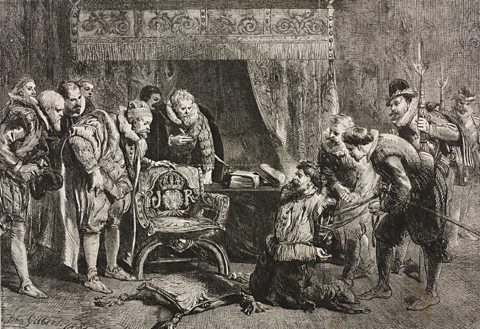The impact of religious change in the 17th century
The Stuart period
James I ordered that Catholics who did not attend Church of England (Protestant) services should be fined, and was reported to detest the Catholic religion. This led to greater opposition to him from Catholics, including the Gunpowder Plot of 1605, which attempted to kill the King and blow up Parliament. The plotters were caught and were executed for high treason.

In the Stuart period, Puritanism Puritans were strict Protestants who followed the Bible closely and tried to live simple, plain lives. They believed that hard work and worship combined was the way to heaven. They therefore did not approve of anything that prevented worship and work. increased in popularity. After the execution of Charles I in 1649, the Puritan Oliver Cromwell became Lord Protector, and Parliament was dominated by Puritans.
This led to a series of laws which tried to enforce Puritan ideas and it became heresy To disagree with, or refuse to follow the religious views of the monarch or the state. not to follow laws such as these:
- playing football on a Sunday was banned
- getting a haircut or beard trim on a Sunday was banned
- swearing was banned
- Christmas day was abolished in 1652. It also became illegal to celebrate Easter or Whitsun
After the restoration of the monarchy with Charles II in May 1660, the strict Puritan laws were scrapped.
Witchcraft
Witchcraft was a criminal offence until 1735, and was punishable by death during the Tudor and Stuart periods. Witches were seen as the devilŌĆÖs helpers on earth. Often, people's lack of understanding led them to believe that bad things were the work of the devil or witches. King James I wrote a book on witchcraft which suggested ways of identifying and catching them.
Each monarch was trying to ensure everyone followed their religious laws. Witchcraft was therefore a concern to both Catholics and Protestants. It is estimated that in 200 years, up to 1,000 people, mostly women, were executed for witchcraft. In particular, the 1640s saw a significant witchhunt in Essex led by the witchfinder, Matthew Hopkins.
